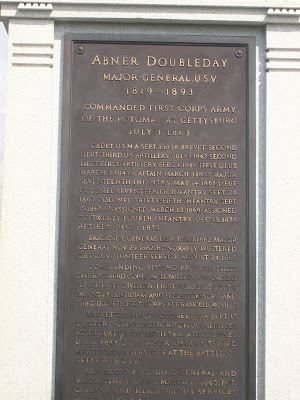I was hauled in by the authorities.
Our campsite wasn't big enough for two vehicles, so Brian had to park our car in the overflow parking near the front gate of the park. Just before we went to bed we were all sitting around the fire when I realized I had forgotten something in the car. I didn't want to take the time to walk all the way to the overflow parking lot so I decided to use Ryker's bike. It was pitch black and I had to don Brian's headlamp just to see where I was going.
Here I am on this little dirt bike with a headlamp (which by the way was too big for me and kept sliding down over my eyes) pedalling through the campground, my knees coming up to my chin with every rotation. Before I had made it halfway back to the car a pickup truck pulls up behind me and a man yells, "Time to park the bike young lady!" (I'm not sure how old he thought I was, but he probably wasn't expecting a 30 something woman to be riding a bike in the dark.) I explained what I was doing and he said it was too dangerous for me to ride in the dark and I would have to get in with him. I was a little taken aback by that request until I noticed that he was the park ranger. I humbly put my little bike in the back of his truck and let him drive me to my car and then back to the campsite.
That's the first time I've been taken home by the police. Dad and Brian got a good laugh out of it, you can be sure.
Day 2 was a travel day as well, but on our way to Baltimore we stopped at Gettsyburg. I'm not sure what I expected but I was surprised by what I saw there. Gettysburg was the bloodiest battle of the war. At the end of the three day battle over 50,000 men and 3,000 horses were dead and the woods and farms around the tiny town of Gettysburg were destroyed. (To put that in to perspective, more Americans died at Gettysburg than in the entire Vietnam War.) Today the battlefield serves as a memorial to their courage.


The monuments are everywhere! There are hundreds of them. Some are right along the road, while others are out in the middle of fields or nestled back in the woods at the site where the regiment suffered their most significant losses. One of the largest monuments on the battlefield is from the state of North Carolina.
This monument marks the place where Pickett's charge, a doomed mission, ended gruesomely.
While we were exploring the tower and surrounding monuments we actually ran into some soldiers. Luckily they were friendly northerners, so they didn't take us yankees prisoner or anything.
It took months to bury all 50,000 bodies. Then in November President Lincoln arrived to dedicate a National Cemetery. The bodies of Union soldiers were exhumed and moved to the cemetery. The bodies of Confederate soldiers were put in a different cemetery or retrieved by their families and returned to the South for burial. This monument marks the spot where Lincoln gave his now famous Gettysburg Address.
From here you can see row upon row of identical rectangular headstones, all bearing the same inscription.
This was in the days before dog tags and all identification was paper, which didn't stand up very well on a rotting corpse that had been buried for a few months and then dug up, moved and buried again.
Where regiments from specific states were know to have been fighting, and dying, together the soldiers are at least identified by their states.
The death and loss at Gettysburg are overwhelming. It all seems so futile, so senseless. After all this wasn't a battle over a river, or a bridge or a some other strategic point. It just happened to be the spot where Lee decided to cross the Potomac and bring the war on to northern soil. But when you look at the big picture the end of slavery and the preservation of the Union were achieved because of countless battles like Gettysburg.
I'm glad I got to see it at least once in my life. I learned a lot and gained a greater appreciation for the battle tactics of the day. Those men suffered immeasurably even when they weren't in the midst of battle. They fought hunger and disease and injuries. They froze to death and slept outside for years on end. If they were injured there was little hope of recovery and if they were sick there was little medicine. The fact that so many of them survived at all is a miracle.
I think the boys got a great history lesson that they may not have appreciated at the time but that they will certainly appreciate as the years go by. I know I will.
We left Gettysburg at sundown and headed on in to Baltimore. We camped at Patapsco Valley State Park, which was experience in and of itself....but that's a story for another day.
Tomorrow: A tunnel, some fancy driving, a fort and four boats.














3 comments:
excellent blog. I really enjoyed reading it, and remembered a family trip to Gettysburg (long ago).
Great story about the campground! Wow- you got so much more history out of 1 trip to Gettysburg than I did out of three! Good job!
It helps to go with a History Major....and a report from Wikipedia on your laptop.
Post a Comment